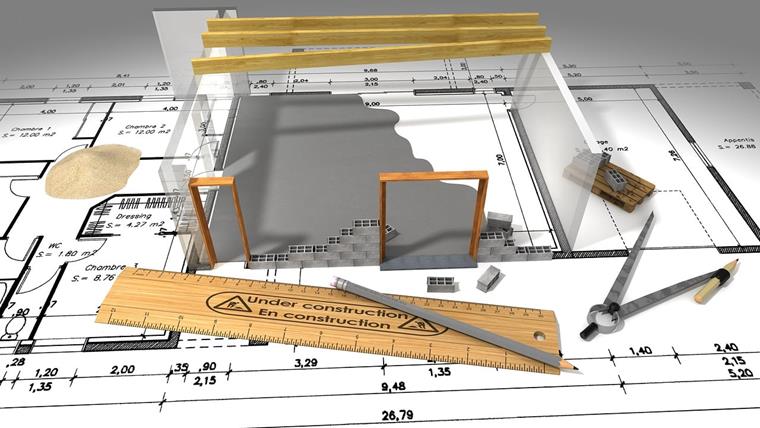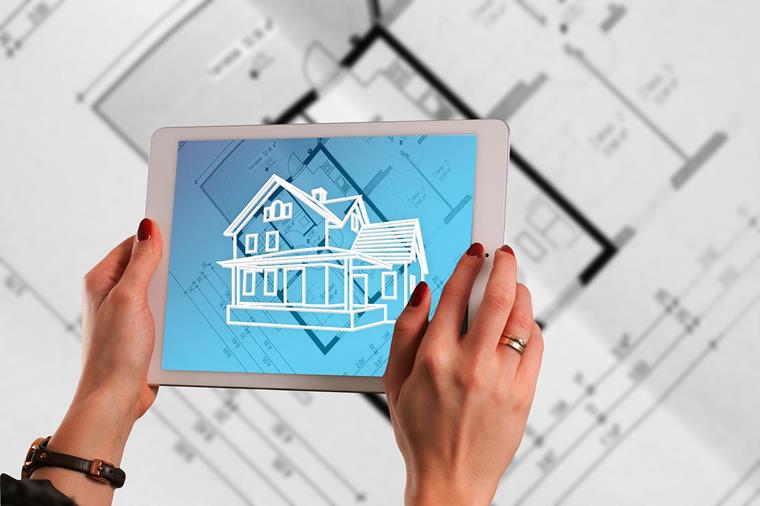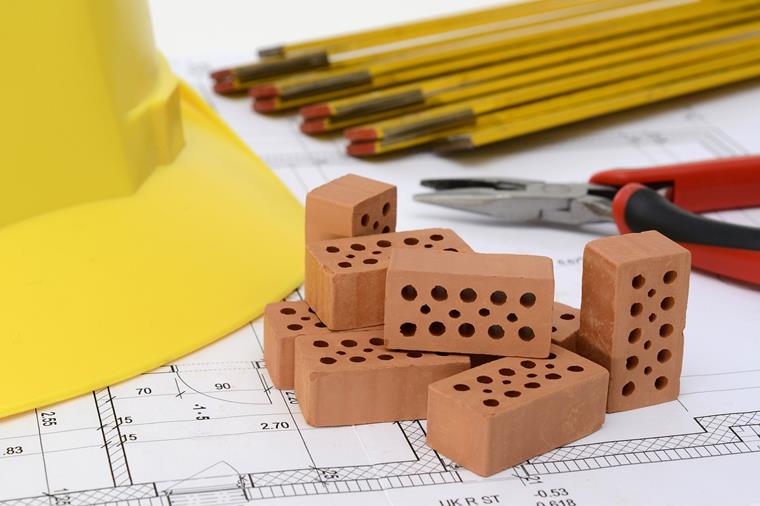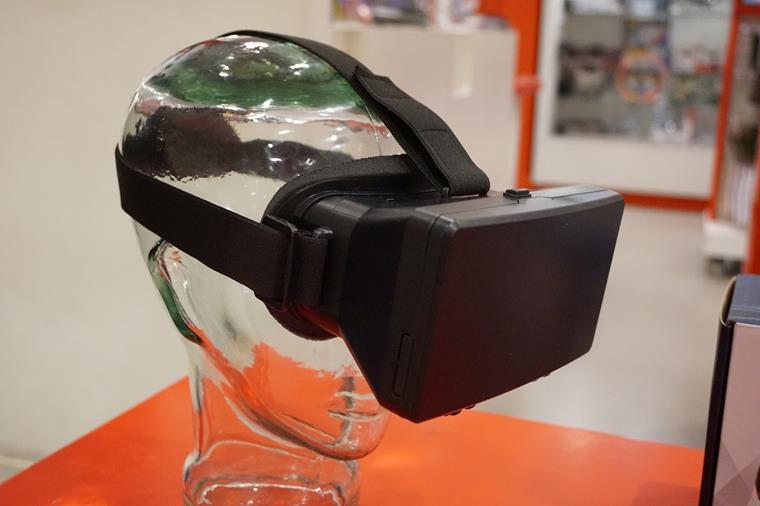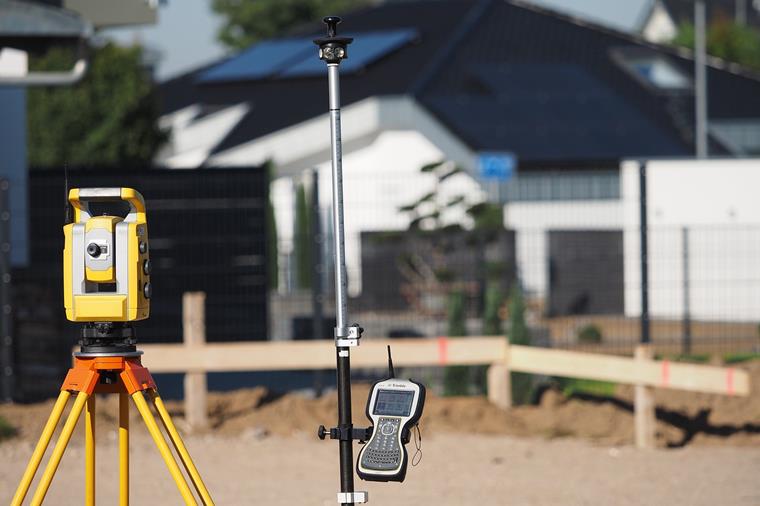Try Before You Buy
The topic of BIM is not new in our podcast, on the contrary. That is precisely why we wanted to approach the whole subject a little differently. Our guest Ralf Weineck will help us with that. He is an architect and BIM manager in an engineering office.
His career began quite classically with a degree in architecture in Zurich. As the mid-1990s, he first came into contact with CAD programs and 3D models. At the time, technology wasn't too advanced, but that has changed over time.
Ralf learned a lot about everything that had to do with 3D modeling. After all, he has always been a person who simply tries out new things and thus learns. He was particularly interested in bringing 3D models to life. Today he is self-employed in the field of architecture visualization and responsible for BIM in an office at the same time.
In the course of his work, he noticed that there are some views on the issue of BIM that do not fit together at all. Therefore, he started dismantling some of the inflationary BIM courses offered on LinkedIn. This is where we start.
General Information About BIM
We don't really have to explain BIM a lot. We have already done this in the previous posts. Feel free to read if you are interested in the topic! We briefly summarize the basics here.
The real goal of BIM is to get the maximum benefit from 3D models. If these models are to be used in-house, for example, to generate design plans or for evaluations, they are called Little BIM.
As soon as a model is uploaded to a platform and made available to external parties, the process falls under Big BIM. The uploaded models can then be viewed and discussed across companies on the platform. This is the BIM coordination model. Here, the models complement each other or can be split up so that everyone gets the part they need for their work.
There are two variants of BIM per se: Open BIM and Closed BIM. The difference is easy to explain. Using Closed BIM, everyone involved works with the same software. Open BIM is characterized by the interfaces that allows for working accross the programs.
What is already possible with BIM
Ralf gives us an autonomous excavator as an example. It needs data that tells him how far it can dig and at what depth it should stop. Therefore, it is fed with a 3D model, so to speak, and it works. That is also BIM, although it seems quite unspectacular.
We also have to keep in mind that not the entire construction industry is on the same BIM level. For timber structures, for example, 3D models have been used for decades, which timber builders send to their milling machines. So the whole thing is not an exciting novelty everywhere, as it is often sold.
BIM is also used for the initial measurement. A laser measures everything on the construction site and then outputs how many holes have to be drilled and where. In the future, Ralf is certain, there will also be a robot for drilling the holes. With and thanks to BIM, we are always a step further.
The pipe laying in space using polygon models has also long been used in practice. We already see: It doesn't always have to be as spectacular as it is shown on social networks. Rather, BIM is slowly evolving.
- "That is the important pragmatic approach for me. To see what can be done today and what can be improved now, at the next construction site."
Implementation Problems of BIM
Why is BIM only gaining acceptance very slowly against the proven methods? Ralf has a lot to say about this. It begins with the fact that BIM often fails due to acceptance. Few people know what to do with the term itself. They are usually very skeptical and almost fearful of BIM. Many firmly expect something complicated and bad to come upon them.
- "Something that you have never done, that you have no idea about, and you are suddenly no longer competent. That's a fear that I want to take away from them."
To achieve this, Ralf uses the simplest possible examples to explain how BIM works, for example, a Lego man model where the individual component information is stored. In his opinion, practical BIM training should be offered extensively.
With the skepticism, we come straight to the next problem. It is better to keep traditional processes than to open up to new ideas. Why? They have worked so far. Here, it is necessary to understand the existing processes first in order to be able to improve them. A good example of this is BIM2Field, that is, the digital, paperless transfer of data as a 3D model directly for the implementation on a construction site.
Another problem is that standards are far too slow. Actually, we have to solve problems today before there are even standards for them. Due to our bureaucracy, the construction industry cannot keep up, as usual.
Ralf also thinks that the training of those who draw such 3D models is inadequate. They are often expected to master BIM – after all, they design these models. However, BIM is not integrated into a classic training course of a technical draftsman in fact. Therefore, you often have to acquire this knowledge yourself, and that is tedious when there are hardly any reputable courses for it.
Ralf explains to us that, especially in the coordination phase, many offices fear additional work due to BIM. Eventually, working with a 2D plan is difficult enough. In fact, colliding pipes or other similar problems are much easier to detect in a 3D model. The basic motto of BIM applies here: just try it out and gain experience.
Furthermore, many BIM trends sound good in theory, but are rather impractical or not necessary in practice. He cites the example of walking through a virtual construction site using VR glasses. Of course, he tried it, but preferred to stick to the screen view, as the VR glasses are rather uncomfortable to wear, especially for those who wear glasses. It may be different when building owners are shown a 3D model of their project in VR. Of course, this looks very different from a 3D model on the screen.
In addition to VR, Ralf also talks about AR. The reality is superimposed on a headset with digital images. So virtual and real collide. In this case, it also sounds very good in theory, but how something like this can be conveniently used in everyday life remains to be seen. The headset has to fit and not be interfering, especially when it comes to a fitter work.
Another problem is in the software used nowadays. Many CAD programs are unnecessarily complicated and build on their 2D predecessors. A technical draftsman usually works in 2D, that is, with floor plans, and occasionally switches to a 3D view. Ralf sees this as completely counterproductive. Nowadays, you should work with 3D models from the very beginning. Many programs are not BIM certified, but can still be used if you can handle them.
- "I'm always in 3D. I always see what I'm doing, so I don't have to check it again."
Furthermore, of course, there is the human side. Models and plans made by draftsmen are seldom perfect down to the last detail. They're just humans. Someone writes a little lowercase instead of an uppercase, there is a letter missing – such problems often occur. Adjustments are often necessary here, which Ralf makes on the models so that everything fits together in the end.
In the BIM processes, you have to learn to deal with the mistakes of others. He says that he always told his students to work in a way that someone else could keep working with their plans.
Future of Construction
Now, we want to know, of course, how Ralf assesses the influence of BIM on the future of the construction industry. In many social media posts, the guests repeatedly talk of a "big bang" that will fundamentally change the construction industry. He sees it differently. Already now, and in some cases for years, various forms of BIM are influencing the construction industry and its processes.
BIM is not often discussed directly at all – the term simply does not come up. BIM processes, such as the sharing 3D models on corresponding platforms via interfaces, usually arise completely by themselves if you are ready to get involved in something new.
He also points out that robotics and automation are not yet so advanced that they can be used across the board on construction sites. We see what the future might look like in the movies, where damaged spaceships are being repaired by robots while hovering in a hangar. But there is still a long way to go. Many people worry about their work because of automation, but for no reason, as Ralf thinks.
- "Are there jobs disappearing? Yes, but this person can be used better in a company than holding a yardstick."
We have come a long way in digitization in the past 20 years, and this trend will continue slowly, but steadily.
Of course, we also ask Ralf for his thoughts on other innovations besides BIM. He tells us that he is particularly interested in the topic of 3D printing, as it is based on 3D models. His second professional field, visualization, is also considered here. He really enjoys spending time making models pretty, so to speak, through modeling: Trees, plants, designer sofas, and so on. Nowadays, this can be done very quickly and with little effort. For example, he considers virtual building inspections with VR glasses as very exciting.
- "You can also see how the sun comes into your room in the evening and the lighting mood changes."
What advice would he give to newcomers in construction? To stay curious, to try new things and to exchange ideas. He very much hopes that students or young graduates will be able to work with this new software. Because this knowledge is absolutely necessary for the future in order to further advance the construction industry.
Ralf, what is your favorite building?
We also ask him our final question and receive an answer immediately. He is particularly fascinated by the Copenhill in Copenhagen. This is a waste incineration plant with a 500m long ski slope on the roof. It was designed and built using BIM, of course.
It is really impressive how naturally our neighboring countries already deal with this new way of working. Thank you for visiting us!
Would you like to listen to the full episode? Then click here to visit our Go to Dlubal Podcast . All episodes are listed there. We look forward to the next time when it's said: Digital and Innovative Trends in Civil Engineering!
